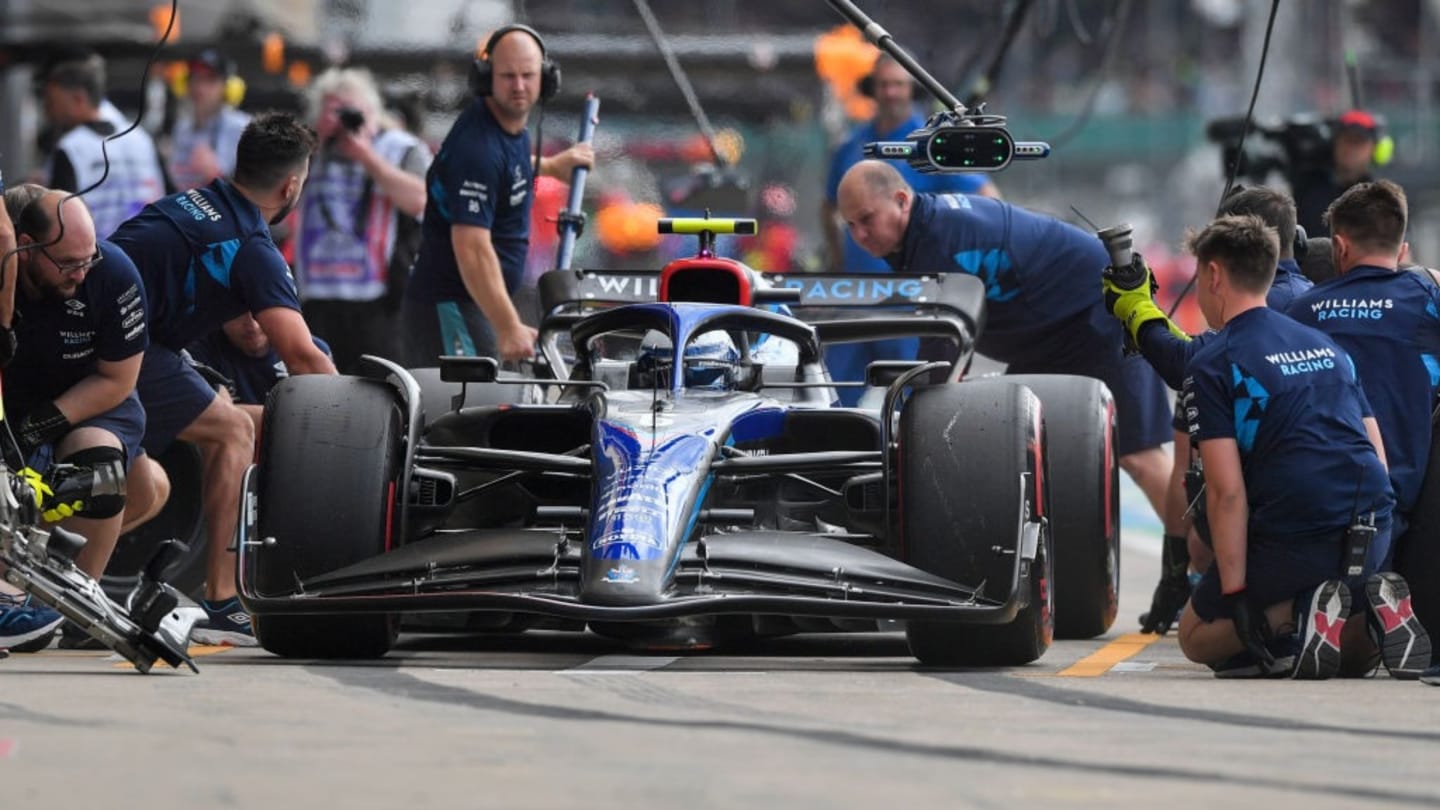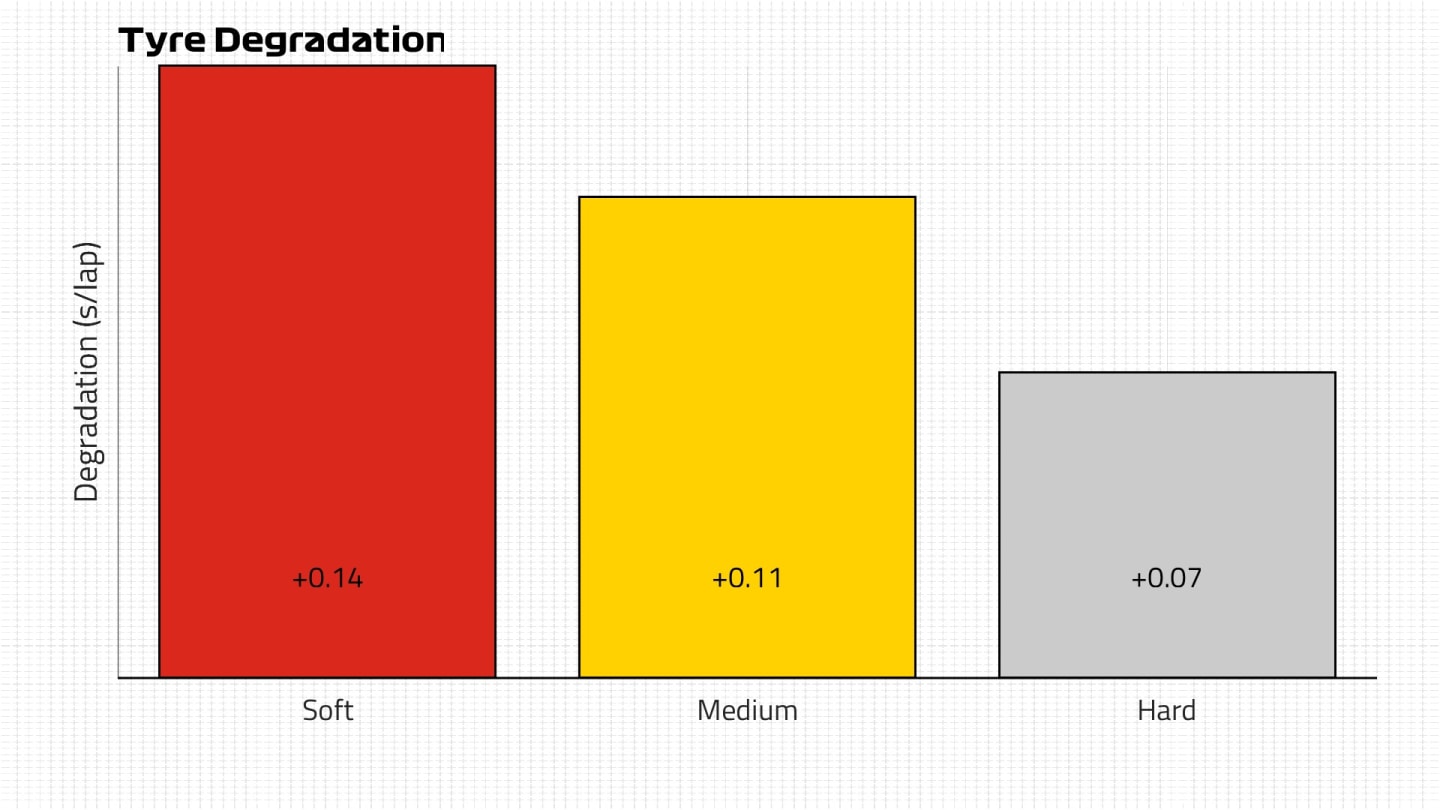
Feature
STRATEGY GUIDE: What are the possible race strategies for the 2022 British Grand Prix?

Share

After a wet qualifying session there’s a brand new pole sitter at Silverstone but it looks like being a far from straightforward race, so let’s take a look at the different strategic options available to the teams and drivers for the British Grand Prix…
What’s the quickest strategy?
In a break from the norm, it’s not a one-stop strategy that’s the quickest way to the finish at Silverstone, with the two-stopper a better option available to the teams.
That’s because degradation and tyre wear levels are high due to the nature of the circuit, which features lots of long, high-speed corners that put a lot of stress through the Pirellis.
READ MORE: Sainz pips Verstappen to take maiden pole in wet British Grand Prix qualifying
While the most likely option is for all drivers to start the race on the medium compound tyre, the quickest route to the end is a slightly unusual one. That’s because it features two opening stints on the same compound, with teams hoping to reach a pit window between Laps 22 and 28 to then make a stop for mediums once again.
Usually, the preferred move is to another compound in order to fulfill the necessity to run two different types of tyre as early as possible (and we’ll explore that option later on) but the medium is the best race tyre and then the soft is a good option late in the race. Using the soft earlier – when the car is on higher fuel – is deemed a risk because it comes with an increased chance of graining due to the lower grip levels after Saturday’s rain.
)
Many teams might opt for one of the strategies above – but on paper there is a quicker (but riskier) option...
So after going medium-medium, the final stint would take place on the softs and be around 16 laps long, when the tyre should be more protected against graining by the lighter fuel load and the track will be rubbered in as much as possible.
While it’s quickest, it does go against what many teams tend to prefer, and is an aggressive strategy, so won’t necessarily be risked by many.
How about a different option for the top ten?
The two-stopper using two sets of medium tyres only works for teams that have two sets of mediums available to them in their allocations, and McLaren are one of the teams that don’t have that. So Lando Norris will be forced to use all three compounds if he wants to two-stop.
To pull that off, the most likely route is to start on the medium, switch to hard tyres any time between Lap 16 and 23 and then run until near Lap 35. From there, the softs can be used for the final stint just like the the quickest strategy.
)
There is also the option of trying to make a one-stop work, staring on the mediums and reaching at least Lap 25 before switching to the hards and managing them to the end of the race.
The issue with this strategy is not only pace – with the hard tyre potentially up to half a second per lap slower than the medium – but also wear, which is why that first stint needs extending, because while the hard tyre might not degrade too much, it will wear down over a number of laps.
Those who also go for that one-stopper would always have the option of fitting a set of softs late on if the degradation or wear levels proved to be too high and were costing them significant lap time.
What are the options for the bottom half of the field?
There’s another variation on the two-stopper that teams can look at, with everyone except AlphaTauri (who, like McLaren, only have one set of mediums and one set of hards left) able to start on the mediums but then switch to the hard tyre for a short middle stint.

The reason they would choose this is if they are worried about the graining on the soft compound, and want to avoid it. In that case, they could look to carry out a first stint of around 18 laps – but potentially longer – before switching to hard tyres for a second phase of the race that could be as short as 10 laps.
That short stint would be to limit the amount of lap time lost on that tyre, before then returning to the medium for the final run to the flag. This could prove to be a preferred strategy for many in the top ten, too, because it’s a more conservative approach that also provides flexibility in the middle stint.
READ MORE: Verstappen philosophical after Leclerc spin costs him shot at Silverstone pole
Wait, but what’s the weather doing?
It wouldn’t be the British Grand Prix without some rain at some point in the weekend, and this year is no different. Saturday’s qualifying session only saw intermediate tyres used, and the grip level lowered.
There’s also a decent chance of rain at the start of the race and throughout the first half – that could mean there’s a shower that teams have to deal with, or they could be faced with a wet track from the start.
)
In the latter case, if there’s a drying track then the crossover point becomes a crucial factor. That’s the moment at which teams want to switch from intermediates to slicks, and getting this wrong by just one lap can lose you a big chunk of time compared to anyone who calls it right.
The good news for the teams is that the wet weather running they got during FP1 allowed them to work out the crossover point, and it’s like to be around the 1m38s mark. So if the track is wet but the rain has stopped, once lap times drop below 1m40s get ready to see action in the pit lane as everyone will want to be first onto the slicks, but nobody will want to be too early.
Even if it’s dry, relatively low temperatures once again – no higher than 20C – will mean the harder tyre compound is tough to warm-up and get into its ideal operating window, so that could also push teams towards trying to complete as much of the race on mediums as possible.
There are also some pretty strong gusts of wind forecast which, as we saw in Barcelona, can lead to errors that can shake-up the running order. As is often the case with the British weather, this one is looking far from straightforward.
YOU MIGHT ALSO LIKE
News 'One of the best feelings of my life' – Hamilton reflects on 'special' first Ferrari drive
News Laura Mueller becomes F1's first female Race Engineer as Haas confirm key personnel changes
FeatureF1 Unlocked F1 QUIZ: Spa-Francorchamps special – Test your knowledge of Grand Prix history at the historic Belgian track
Feature Key Lewis Hamilton questions answered as the seven-time champion moves to Ferrari




)